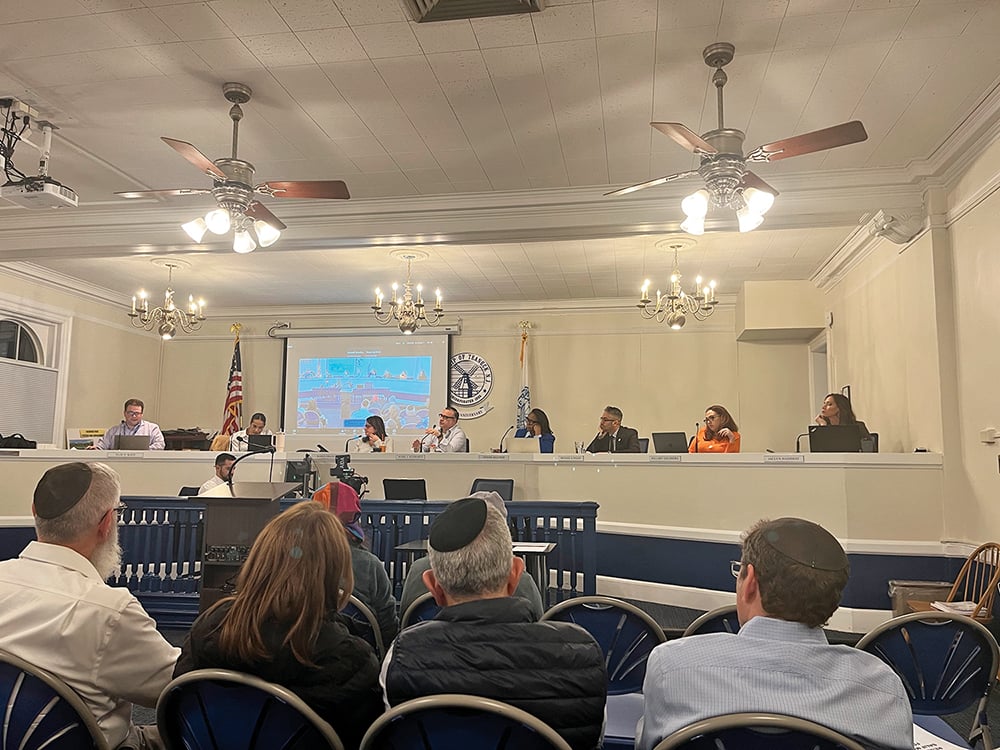One could argue that challah bakers do not suffer from separation anxiety. That is because the term “challah” refers to the mitzvah of separating a portion of the dough before braiding, which in Temple times was set aside as a tithe for the High Priest. In Hebrew, this commandment is called “hafrashat challah” or “separating challah” and it applies not only to the loaves consumed on Shabbat but more broadly to any loaf of bread. (Yes, you could refer to a stupid, uncultured and clumsy baker as an “oaf” of bread.)
Most challah recipes include eggs, flour, water, sugar, yeast, and salt but there are several exceptions. Challah made without eggs is water challah, challah made without flour is gluten-free and challah made without water, flour or yeast… is an omelet. Challah made without yeast is dense and will not rise, which also would describe a fool who refuses to stand during davening.
Challah usually is pareve, containing neither dairy nor meat. If your challah is stuffed with dairy, it might be a cheese blintz and if your challah is stuffed with meat, it might be Beef Wellington.
When it comes to shapes, challahs come in several varieties including rectangular, circular and square. Some challahs arguably are more of a squircle, which obviously is a portmanteau of the words “square” and “circle.” (No, a “kneidel” is not a portmanteau of “knish” and “dreidel.)” Believe it or not, a rounded square technically is not the same thing as a squircle, just like a lemon is the same thing as an etrog and Brunswick stew is not the same thing as cholent. Of course, some challah is oblong, a shape that is also known as a discorectangle, obround or sausage body. On that note, do yourself a favor: never refer to your spouse as having a discorentangular, obround or sausage body.
Some holidays bring with them a challah of a special shape. For example, on Rosh Hashanah challahs are normally baked in a circular shape to symbolize the cycle of the year. (Yes, the cycle of the year sounds more like an award for winning the Tour de France.) Some Jews continue eating circular challah from Rosh Hashanah all the way through Sukkot while other Jews just continue eating, regardless of the challah’s shape. Many Jews drizzle honey on their challah in hopes of having a sweet new year. For this reason, few drizzle a Whiskey sour on their challah.
On the first shabbat following Pesach, some bake challah in the shape of a key, known as shlissel challah, as a sign of hopefully finding the “key” to success and attaining prosperity. For this reason, few bake challah in the shape of a lock. Some place an actual key inside the challah, which means that bringing a shlissel challah as a carry-on for a flight is not a great idea. If you bake challah with a metal object inside, you should warn those who will be consuming it. The same safety rules apply when serving brisket that contains kippah clips or cholent that contains a tzedakah box.
On Chanukah, some bake a special challah in the shape of a Magen David (Jewish Star), sometimes referred to as Star Challah. In addition, when Jewish celebrities receive a star on the Hollywood Walk of Fame, they also receive a Star Challah. (Not true.) When celebrities have battles over Star Challahs, such battles are known as Star Wars. (Also not true.) And Ian Ziering, a former star of the hugely popular t.v. show Beverly Hills 90210 and the not-as-popular movie Sharknado, is a very big fan of challah. (True. In 2015, he posted a Youtube video in which he discussed his love of challah.)
Just because some holidays feature a challah of a unique shape does not mean that every single holiday must follow suit. There is no need for a tree-shaped challah on Tu B’shvat or Hamantaschen-shaped challah on Purim. There also is no need for challah to be shaped based on secular holidays. A turkey-shaped challah for Thanksgiving is not necessary, a year-shaped challah, e.g., shaped as 2020, for New Year’s Eve is not required and a fireworks-shaped challah for the Fourth of July may be going a bit too far.
If you want to get creative with challah, in terms of shapes and colors, you might want to focus on biblical events. For example, you could bake rainbow challah to commemorate the post-flood rainbow in the sky from the story of Noah. You could bake technicolor challah to commemorate the story of Joseph and his coat of many colors. You could bake red velvet challah to commemorate the splitting of the Red Sea from the story of the Exodus. But, if you want to commemorate the story of Samson, please do not bake challah with a hair in it. (Ew!)
By Jon Kranz











